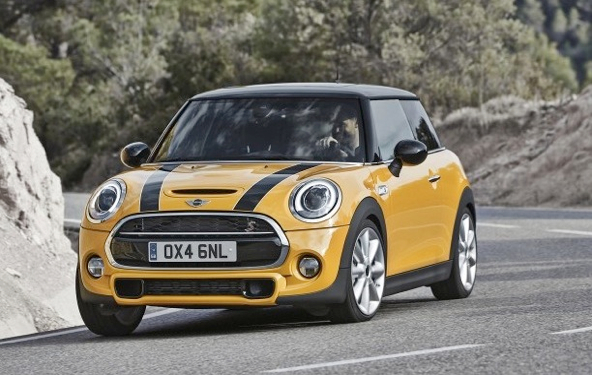All-new 2014 Mini unveiled 18 | 11 | 2013

BMW HAS LIFTED the wraps from the latest generation of Mini. The third to be built under the ownership of BMW, the latest Mini — though instantly recognisable — is even larger, and boosts a host of new technology.
Set to enter Scottish showrooms in Spring of next year, with prices starting at £15,300, the all-new model will also introduce a new range of three-cylinder engines.
Available initially in three Mini variations — Cooper, Cooper D and Cooper S — the new Mini is 3821mm long, 1727mm wide and 1414mm high. That makes it 98mm longer, 44mm wider and 7mm taller than the outgoing model.
BMW has also increased the Mini's wheelbase, up by 42mm to 2495mm, and track width increases by 42mm at the front and 34mm at the rear. The growth in size has an immediate affect on the cabin, where interior space also grows. There's also more stowage space in the boot, up by 30% to 211 litres.
At launch, the engine range includes a 134bhp, 1.5-litre three-cylinder petrol unit in the Cooper, a 114bhp, 1.5-litre three-cylinder diesel in the Cooper D and a 189bhp 2.0-litre four-cylinder petrol in the Cooper S.
BMW says the new Cooper will return 62.8mpg and emit 105g/km CO2, while the Cooper D — which starts at £16,450 — will emit 92g/km and give 80.7mpg. The range-topping Cooper S has figures of 49.6mpg and 133g/km.
Related: Hybrid option planned for new Mini
The new generation of car will also see three all-new transmissions introduced across the front-wheel drive range.
A six-speed manual — with a rev-matching system on downshifts — is standard, though a six-speed automatic is optional on all models. While it increases CO2 emissions, it still dips below 100g/km in the Cooper D auto, with a figure of 98g/km.
There's also an optional sports version of the auto 'box, with shorter shift times, paddle shifters and rev matching on downshifts.
Mini claims the latest model is a true four-seater for adults, and is capable of carrying their luggage. And while there's more shoulder room, the footwells are also larger and the front seats bigger and more adjustable.
One of the key changes is the centre-postioned speedometer has been moved from the large central display of the previous Mini models, to a location directly in the driver's eyeliner.
New technology also ensures the Mini is the most connected car in its segment. A new LED display concept, the first of its kind, provides the driver with visual feedback whilst operating the car and creates a premium ambience.
There's also the option of LED headlamps for both dipped and main beam, with the new Mini being th first car in its segment to offer such a choice.
The LED headlamps are surrounded by an LED daylight driving ring, the lower section of which reaches down to the white turn indicators. The rear light clusters also feature an all-LED design.
Related: First award for new BMW i3
Keep up-to-date with all the latest news by following us on twitter.com/scotcars
Jim McGill